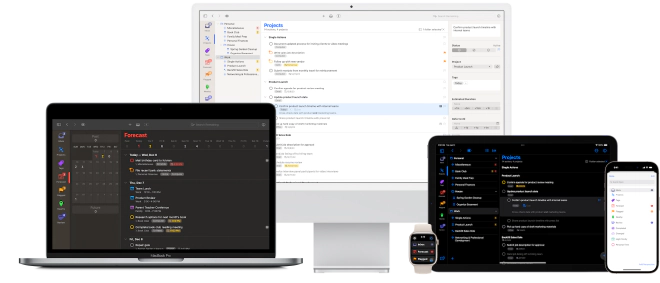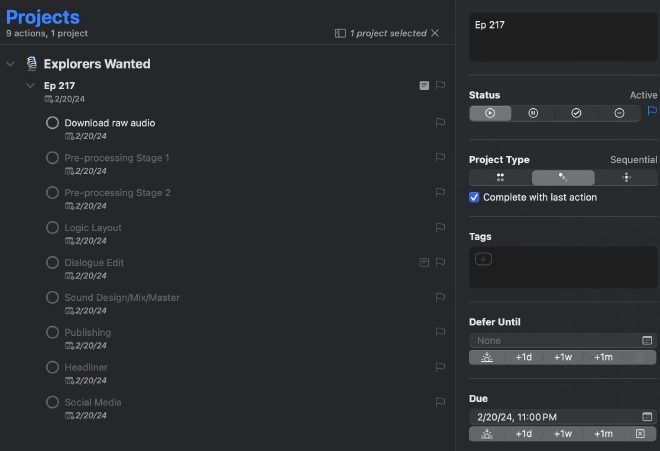After 14 years away, I’m back to living that OmniFocus lifestyle. Way back when, before I had received my formal diagnosis for ADHD, I bounced between so many task management systems with excitement as I struggled to get control over my life.1 I had tried OmniFocus for a bit, but at the time thought it was too fiddly and was lured away by Things, which had a faster release cycle and adopted new iOS features quickly.
What Brought Me Back? #
This is the question I hear you asking, my imaginary reader, and the answer is rooted in a hobby project. I’ve long lamented that in any work environment you end up with multiple inboxes of tasks. For example, I work at a software company, run a small podcast media company, maintain a couple open-source projects, and am a parent, so the means with which I can be assigned tasks include:
- Emails
- Microsoft Teams 2
- Family calendars/texts
- Aha
- Jira
- Confluence
- Zoho
- Deel
- Github
- Asana
- My personal to-do list
This has always annoyed me, because it means that if I want to organize my time, I need to incorporate those all into a master to-do list and then keep them all in sync. I wanted to be able to keep these all in sync with my personal system, which at the time was still Things. So I started an ambitious web app that could sync those tasks over an API, and support the creation of multiple backend engines. Creating that master database forced me to think about how I’d ideally manage said tasks, and after a couple months to poking of tinkering, I realized with a shock that I was simply reimplementing OmniFocus and its built-in automation support!
So, I resolved to revisit OmniFocus and see if I was wasting effort on a separate system.3
Testing the Waters #
First of all, since I last used OmniFocus 2, the fine folks at Omni Group had radically improved the look and feel of the application, as well as building out a fully-featured web version. In doing so, it had preserved the features I knew and loved from the old version, such as defer and due dates that included a scheduled times, built in task review support, easy capture, and robust support for different types of projects.4

I’ve now been using OmniFocus exclusively as my primary task manager since last October, and it has been like slipping into a warm bath. It’s both familiar and new, and has been keeping my life organized. Automation plugins– like the excellent Templates for Omnifocus by Kaitlin Salzke –have been helpful additions, particularly with things such as podcast episode production.

What’s Next? #
Now that I’m confident that OmniFocus is the right tool for my current situation, I’ll start looking into additional syncing tools to enhance my ability to capture and update tasks from my many other inboxes. And as I make progress, I’ll be sure to share updates here!
Not even kidding. For example, here’s a non-inclusive list:
- Remember the Milk
- Emacs Org Mode
- Flow
- Asana
- A
todo.txtfile - A bullet journal 5
hissssssss ↩︎
Spoiler alert: I was doing exactly that. ↩︎
This is really important when you are a knowledge worker with lots of projects. You need to be able to differentiate between projects that contain:
- Single actions which represent any kind of loosely related busy work that needs to get done.
- Parallel tasks that can be done in any order based on their priority and urgency.
- Sequential tasks that must be completed in a specific order based on their dependencies.
Analog methods work poorly for me. I need to be able to do ubiquitous capture and search. The manual work involved in BuJo doesn’t gel well with the number of projects and contexts I need to stay on top of each week. ↩︎
